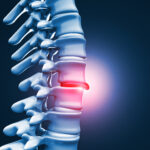
Lower Back Pain
A Spectrum of Conditions Linked to Lower Back Pain
Several underlying conditions are linked to lower back pain. These encompass:
- Degenerative conditions of the intervertebral discs
- Compressed nerves
- Degeneration of the joints in the spine
- Spinal stenosis
- Osteoporosis
- Spondylolisthesis
- Fibromyalgia
- Spinal irregularities
- Osteoarthritis
- Neuropathy
- Spinal fracture
- Spinal deformities
- Tumors
Navigating Lower Back Pain Diagnosis
While lower back pain is commonplace, it can also serve as a sign of more severe underlying conditions. After evaluating the patient’s medical history, physicians may employ the following tests to confirm diagnosis and devise a treatment plan:
- X-ray imaging
- Discography
- CT scan
- MRI
- EMG (electromyography)
- Bone scan
- Ultrasound
Effective Strategies for Lower Back Pain Management
Though lower back pain is often not a grave concern, its impact can be distressing and debilitating. Management strategies for this discomfort are generally straightforward and may encompass:
- Medication
- Application of ice or heat
- Rest
- Exercise
- Chiropractic spinal adjustments
- Acupuncture
- Biofeedback
- Interventional therapy
- Traction
- Ultrasound
- TENS (Transcutaneous Electrical Nerve Stimulation)
- Surgical interventions


Empowering Prevention for Lower Back Pain
For individuals experiencing lower back pain due to improper body mechanics or non-traumatic events, preventive measures are essential. Some of these include:
Pre-exercise stretching
- Maintaining correct posture
- Opting for proper lumbar support while seated
- Choosing low, comfortable heels
- Sleeping on one’s side to preserve spinal alignment
- Avoiding heavy lifting
- Maintaining a healthy weight
- Fostering a wholesome lifestyle
- Quitting smoking
Book an appointment
"*" indicates required fields










